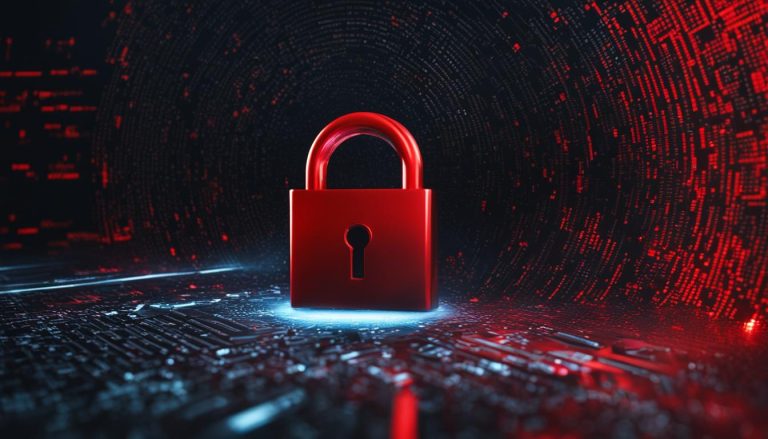End-to-End Encryption is a method of secure communication that ensures the privacy and integrity of messages or data. It prevents unauthorized access or interception by encrypting the information at the sender’s end and decrypting it at the recipient’s end. End-to-End Encryption ensures that only the sender and intended recipient can access the decrypted data, providing a high level of security and privacy. This encryption method has become increasingly important in the digital age, where data breaches and unauthorized access are significant concerns.
Key Takeaways:
- End-to-End Encryption ensures secure communication by encrypting data at the sender’s end and decrypting it at the recipient’s end.
- It prevents unauthorized access and provides a high level of security and privacy.
- End-to-End Encryption is crucial for protecting sensitive information, such as personal messages and financial transactions.
- Messaging apps like WhatsApp, Signal, and Telegram have implemented End-to-End Encryption to safeguard user conversations.
- End-to-End Encryption offers several benefits, including maintaining trust in digital communications and protecting user privacy.
The Importance of End-to-End Encryption
End-to-End Encryption plays a pivotal role in ensuring the security and privacy of our digital communications. In today’s interconnected world, where data breaches and unauthorized access are a constant threat, it is crucial to have robust encryption mechanisms in place. End-to-End Encryption provides an added layer of protection by encrypting messages or data at the sender’s device and decrypting it at the recipient’s device, ensuring that only the intended recipient can access the decrypted information.
One of the primary benefits of End-to-End Encryption is its ability to safeguard sensitive information from hackers and unauthorized entities. By encrypting data, even if it is intercepted during transmission, it remains unreadable and incomprehensible to anyone who does not possess the decryption key. This ensures that our personal messages, financial transactions, and confidential business communications are protected from prying eyes.
Furthermore, End-to-End Encryption provides reassurance and trust in our digital communications, particularly in messaging apps and other platforms where privacy is paramount. Knowing that our conversations and information are secure strengthens the confidence we have in these platforms, and it encourages us to share sensitive information without fear of compromise or intrusion.
In summary, the importance of End-to-End Encryption cannot be overstated. It serves as a powerful safeguard against unauthorized access, protects our privacy, and preserves the integrity of our digital communications. As we continue to rely on technology for various aspects of our lives, having strong encryption measures in place becomes increasingly vital to ensure our security and maintain trust in our digital interactions.
How Does End-to-End Encryption Work?
End-to-End Encryption is a powerful method of securing communication and protecting sensitive data. But how exactly does it work? Let’s dive into the inner workings of this encryption method and explore its key features.
When utilizing End-to-End Encryption, the encryption process begins at the sender’s device. Before transmitting any data or messages, the information is encrypted using a unique encryption key. This key is known only to the sender and the intended recipient, ensuring that no unauthorized parties can access or decrypt the data.
Once the encrypted data is sent over a network, it remains in its encrypted form until it reaches the recipient’s device. At the recipient’s end, the decryption key is used to decrypt the data, making it readable and accessible. This process occurs exclusively at the endpoints, meaning the data remains secure even if it passes through intermediate servers or networks.
Compared to other encryption methods, End-to-End Encryption offers a higher level of security. Unlike traditional encryption, which may involve encrypting data at various points along the communication path, End-to-End Encryption ensures that the data is encrypted and decrypted solely by the sender and the recipient. This eliminates the risk of interception or unauthorized access throughout the transmission process.
By implementing robust encryption algorithms and secure key exchange mechanisms, End-to-End Encryption guarantees the privacy and integrity of sensitive information. It has become the go-to encryption method for messaging apps, ensuring that only the intended recipients can access the content of the messages, keeping them protected from prying eyes and potential eavesdroppers.
Key Features of End-to-End Encryption:
- Encryption occurs at the sender’s device and can only be decrypted at the recipient’s device.
- Unique encryption keys are used for each communication session.
- Data remains encrypted throughout transmission, even across intermediate servers or networks.
- Offers a higher level of security compared to other encryption methods.
- Ensures privacy and protection for sensitive information.
Overall, End-to-End Encryption provides a robust and reliable solution for securing communication and protecting data. By understanding the inner workings of this encryption method, users can have peace of mind knowing that their private conversations and sensitive information remain confidential.
End-to-End Encryption in Messaging Apps
Messaging apps have become an integral part of our daily lives, allowing us to connect and communicate with others conveniently. However, with the increasing concerns around privacy and data security, the implementation of end-to-end encryption in these apps has become essential.
End-to-end encryption ensures that the content of our messages remains confidential and secure. When we send a message through an encrypted messaging app, it gets encrypted on our device using a unique encryption key before it is sent. This encrypted message can only be decrypted and read by the recipient’s device using the corresponding decryption key. This means that even if someone intercepts the message during transmission, they won’t be able to access its content, providing an additional layer of protection.
Several popular messaging apps, including WhatsApp, Signal, and Telegram, have embraced end-to-end encryption to prioritize user privacy. For instance, WhatsApp has implemented this encryption method for all types of communication on their platform, including text messages, voice calls, and video calls. This ensures that only the sender and recipient can access the messages, preventing anyone else, including the service provider, from reading the content.
With the growing concerns regarding data breaches and unauthorized access to personal information, the adoption of end-to-end encryption in messaging apps has become more important than ever. Users can have peace of mind knowing that their private conversations are protected, and their sensitive information is kept confidential. End-to-end encryption plays a crucial role in maintaining the security and trustworthiness of digital communication.
Benefits of End-to-End Encryption in Messaging Apps:
- Enhanced privacy and security for user conversations
- Protection against unauthorized access and data breaches
- Confidentiality of sensitive information, such as financial details or personal messages
- Prevention of content interception by anyone other than the intended recipient
By implementing end-to-end encryption in messaging apps, developers and service providers are prioritizing user privacy and security. It is a step towards creating a safer digital environment where individuals can communicate without the fear of their messages being compromised.
Conclusion
In conclusion, the benefits of End-to-End Encryption cannot be overstated. This secure communication method ensures the privacy and integrity of messages and data, providing a high level of security in the digital age. By encrypting information at the sender’s end and decrypting it at the recipient’s end, End-to-End Encryption prevents unauthorized access or interception.
With the increasing concerns of data breaches and unauthorized access, End-to-End Encryption plays a crucial role in protecting sensitive information. It safeguards personal messages, financial transactions, and confidential business communications from hackers, government surveillance, and other unauthorized entities. By maintaining a secure communication channel, End-to-End Encryption enhances trust in digital communications and preserves user privacy.
End-to-End Encryption works by encrypting data at the sender’s device using a unique encryption key, ensuring that only the intended recipient can decrypt and access the data. This encryption and decryption process occurs at the endpoints, making it secure even when passing through intermediate servers or networks.
End-to-End Encryption has been widely implemented in messaging apps to protect users’ conversations. Popular messaging apps like WhatsApp, Signal, and Telegram have embraced this encryption method, ensuring that only the sender and recipient can access the messages. This prevents anyone, including the service provider, from reading the content and further enhances the privacy and security of user communications.
FAQ
What is End-to-End Encryption?
End-to-End Encryption is a method of secure communication that ensures the privacy and integrity of messages or data. It encrypts the information at the sender’s end and decrypts it at the recipient’s end, preventing unauthorized access or interception.
Why is End-to-End Encryption important?
End-to-End Encryption is crucial for protecting sensitive information, such as personal messages, financial transactions, and confidential business communications. It provides a high level of security and privacy, safeguarding data from hackers, government surveillance, or other unauthorized entities.
How does End-to-End Encryption work?
End-to-End Encryption works by encrypting the data or message at the sender’s device using a unique encryption key. This encrypted data is transmitted over the network and can only be decrypted by the intended recipient’s device, using the corresponding decryption key.
Does End-to-End Encryption protect my conversations in messaging apps?
Yes, End-to-End Encryption is commonly implemented in messaging apps to protect the privacy of users’ conversations. Apps like WhatsApp, Signal, and Telegram use End-to-End Encryption to ensure that only the sender and recipient can access the messages.
What are the benefits of End-to-End Encryption?
End-to-End Encryption offers several benefits, including maintaining trust in digital communications, protecting user privacy, and safeguarding sensitive information from unauthorized access or interception.
Janina is a senior specialist in information technology


